Brendan Jon Philip – 12 April, 2016
There is a clinical or even medical quality to these images. Cold, light-blue background evokes a sterile site of examination while this sterility hides an implicit threat; the deftly described mole here or the striking freckle there could be the flag that signals a potential cancer. The overall effect is of a disquieting intimacy paired with a cold precision in the execution of each work.
Dunedin
John Ward Knox
a deep and tumbling kind of laughter
27 February - 13 April 2016
The Frances Hodgkins Fellowship is a somewhat venerable institution in the cultural landscape of Dunedin. For fifty years it has been a significant stopover on the career trajectory of many of the recurring names of contemporary art in New Zealand. The residency mode of the Fellowship in itself has intriguing implications on the relatively close-knit arts community of Dunedin, bringing in each year an injection of new blood of somewhat established repute. As structures go, more so than any exhibition - or even attempts such as the Dunedin Public Art Gallery visiting artist programme - the Fellowship engages an artist with Dunedin and Dunedin with the artist. As a city where one can stand in the centre of town and see farmland not that far away, and is used to a perpetually transient population, a year is long enough for a visitor to become one of us. With a deep and tumbling kind of laughter 2015 Fellow John Ward Knox provides a strangely lopsided account of his professional and personal activities in the Edinburgh of the South.
The exhibition as such consists of eleven small oil paintings set in monumental wooden frames that almost swallow whole the images they contain. The paintings are meticulously rendered, tightly cropped details of a female nude. Each is an intimate study of skin; faint tracings of veins visible beneath the translucent surface. Despite this attention to sub-dermal detail the skin is very much a thin sheet draped over the body which has form but no real substance of its own. The twist of torso or of neck and the resulting fall of shadow is a purely surface phenomenon.
There is a clinical or even medical quality to these images. Cold, light-blue background evokes a sterile site of examination while this sterility hides an implicit threat; the deftly described mole here or the striking freckle there could be the flag that signals a potential cancer. The overall effect is of a disquieting intimacy paired with a cold precision in the execution of each work.
The heavy wooden frames, each side in width larger than the paintings themselves, anchor the works with a rigid dominance. Some appear to be recycled timber, deeply and finely worked in smoothed down corners to expose a luminous wood grain beneath the dark patina of time. Other frames appear newer, their surfaces fresher and free from sculptural intervention. With either, the organic warmth of the wood adds a definitive counterpoint to the coldness of the painted works.
Overall the exhibited pieces present a solid and dedicated body of work but it is the accompanying publication, Ashes, however that demonstrates just how busy Ward Knox’s year in Dunedin proved to be. The publication comprises three volumes packaged together in a black slipcase: 2015* - a catalogue of recent shows, Spam Diaries - a stream of consciousness journal, and a deep and tumbling kind of laughter consisting of sketches and working drawings.
The collection is locally printed on the Risograph of Point Offices, which over the past couple of years has lent an aesthetic and material unity to the printed matter of our local scene. From gig posters to gallery catalogues, the uncoated paper stock and distinctive print of the Risograph has become the go-to for offline publication in these parts. So it is that the production of Ashes further cements Ward Knox’s embrace of Dunedin and its culture.
Of the three books Spam Diaries, through its diaristic and stream of consciousness meanderings, provides the most immediate window into the artist’s thought processes. Quite literally the cafe-notebook musings of an erudite 30-something, Spam Diaries details pithy observations of Ward Knox’s fellow coffee drinkers, assorted personal recollections, fantasies, confessionals, and meditations on the peculiarities of this place. All smeared with just a enough shit, semen, and blood to make for a rather voyeuristic exercise.
2015* (the asterisk indicating the sub-title and thereabouts) reproduces the gallery documentation from six exhibitions Ward Knox has been involved with during the Fellowship, and one at Dunedin’s Blue Oyster Gallery in 2014 - hence the ‘thereabouts’ and making this catalogue as much about place as time. These shows deliver an ongoing expression of Ward Knox’s established practice as he explores playful meditations on ephemerality and attempts to cast lucid illumination on the minutiae of existence; whether found in light passing through a spider’s web or in the castaway moment of a cigarette break. The last show of the catalogue, Bodies of Water (falling) at Robert Heald Gallery in Wellington, features three of the paintings from the current Hocken exhibition, showing this work to be less of a specific outcome and the Fellowship to be more of an encapsulation of his overall practice.
The final document in this volume is a letter from the Ministry of Health regarding Ward Knox’s importation of human bones utilised in the exhibitions One at State of Princes in Dunedin and Bodies of Water (rising) at Robert Heald. The letter, with an ominous cloud of unresolved legal action, is a thought provoking coda of ethical complexity.
The sketchbook quality of a deep and tumbling kind of laughter is a treat. I know I am not alone in relishing the opportunity to peer inside this fundamental part of visual arts practice. Ward Knox’s sketches are refined and delicate, betraying a keen and decisive eye that reifies his inherent minimalism. And it is refreshing, although perhaps unfortunate, to encounter a contemporary practitioner who can actually draw.
This is a deeply embodied show, but not visceral. It is full of shape without form, built from transient skin, legally questionable bones, time, place, and behind an unassuming facade; we centrally have Ward Knox himself. More document than outcome, we are presented with an exposition of the artist playing at the role of being an artist, filtered through a keen understanding that laughter, even the deep and tumbling kind, like art or living in a city, is an evanescent process.
Brendan Jon Philip
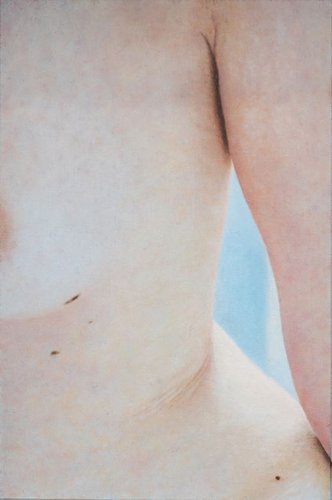
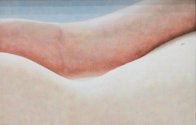
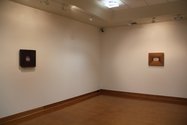
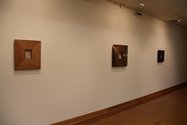
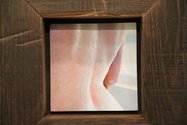
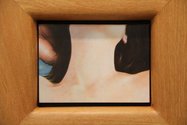
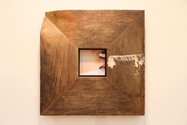
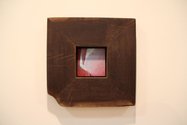
 Two Rooms presents a program of residencies and projects
Two Rooms presents a program of residencies and projects Advertising in this column
Advertising in this column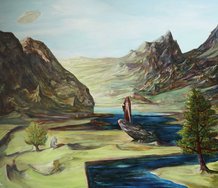
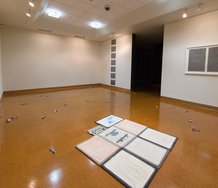
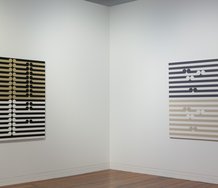
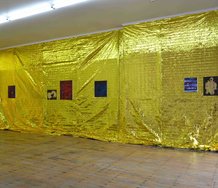
This Discussion has 0 comments.
Comment
Participate
Register to Participate.
Sign in
Sign in to an existing account.